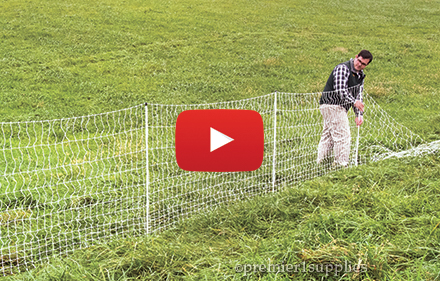| |
|
Goodbye Winter. Hello Spring!
|
| |
|
Maintain fences now for the grazing season ahead
|
| |
It’s time to move our flocks to pasture and begin grazing fresh, green forage. Before we do, we need to make sure that our fences are ready, which means maintenance. Maintenance now = less downtime and hassles later.
Electric netting maintenance checklist:
- Repair broken conductors. Use Litz-Clips® or brass ferrules. A netting repair kit includes all of the essentials for patching tears and holes made by animals, weed-eaters, lawnmowers and whatever else may have damaged the fence.
- Recharge and check energizer batteries. Place solar fence energizers in the sun for a day or two to recharge their batteries. Or use a trickle charger. Test with a digital tester. 12.6V and up is fully charged. Replace batteries that hold a 12.2V charge (40% charge) or less.
- Replace broken support and line posts and gates.

|
| |
|
Even for new users, it takes less than 10 minutes to go from out-of-the-box netting to installed fence. See for yourself! Watch our step-by-step installation video.
|
| |
|
New to electric net fences?
Premier’s electric netting is well-suited for rotational grazing—it’s quick to install, durable and adaptable to dips and curves in difficult terrain.
Electric netting is NOT physically strong. Rather, it relies upon pain and the animal’s memory. When properly energized, animals touch it, quickly learn the fence is painful—and then avoid it.
Common uses…
- Keeps in—poultry, goats, pigs, sheep, cattle, dogs and more.
- Keeps out—deer, bears, coyotes, foxes, stray dogs, skunks, opossums, raccoons and other nuisances.
- Easily rotate livestock to fresh grass.
- Use as a wildlife boundary around gardens, beehives, orchards and vineyards.
With proper planning, installing your own fences doesn’t need to be intimidating. To help you get started, we’ve compiled answers to a few common fencing questions.
|
|
|
|